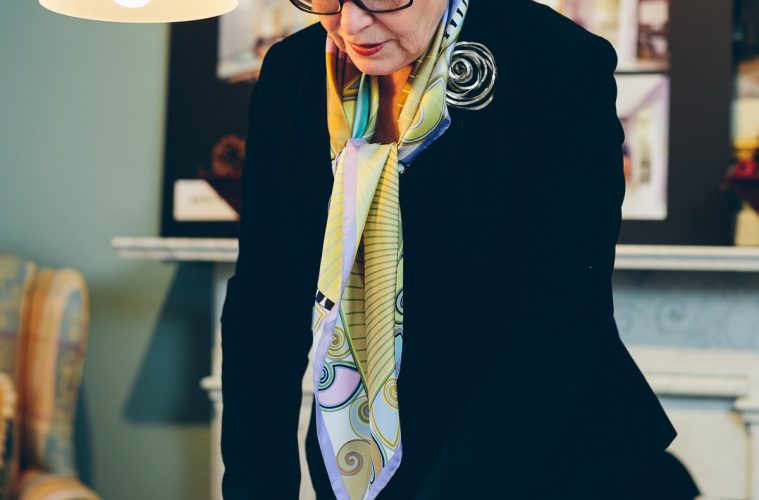“Your house should never tell you when it is time to leave home.”
That is how Lisa Bonneville, award-winning interior designer based in Manchester-by-the-Sea, explains the basis of good design. It’s about more than flow and color and your beautiful personal things, though those, too, are important. It’s about creating an environment that supports you for a lifetime.
“Spatial layout, finishes, and furnishings work together to create a successful multigenerational home.
For someone with hearing loss, you might put a wing chair close to a wall, where ambient room noise is less intrusive,” she explains by way of example. “Good design has always been people-centered, both physically and emotionally.”
Bonneville, who opened her eponymous firm in 1981, has developed a specialty in the field of accessible and universal design. “When I was 10, I had a brother born with deep physical and mental challenges, and I also had a period in my life when I needed help. My brother, and many others, taught me that there are differences between people—both physical and cognitive. And I think that is what led me to the profession I have chosen. The practice of interior design taught me to respect those differences by creating optimal living environments for all people—young, old, and at any other stage in life.”
She especially addresses the common dilemma of homeowners who, as they (and their friends and families) age, find that home is not only hard to negotiate but downright dangerous. Your home should accommodate not only your own disabilities, she says, but those of your guests.
“I hear stories like the one about the woman who said she could no longer go to her niece’s house for Thanksgiving because having her wheelchair carried through the too-narrow doorway by four men was just too difficult and humiliating.”
With foresight and a few structural changes, almost any home can become friendlier.
“Upgrade your home so that you can live there as long as you want,” she suggests. “The cost is far less than the alternative. A two-floor elevator costs less than seven months in assisted living in Massachusetts.”
The most important room to upgrade, she points out, is the bathroom. Taking out thresholds and putting in grab bars are essential, as are adjustable showerheads and reachable controls. Bonneville advocates the use of porcelain tile. “It’s indestructible, beautiful, and easy to clean.”
She points out that for people who use wheelchairs, grab (support) bars and wall-mounted toilet controls can make for a few precious moments of privacy and independence. “Very few people end up in wheelchairs, although they may use one temporarily,” she continues. “But if you design to that standard, life will be a lot easier.”
A well-executed upgrade, she says, can increase the marketability of a house by 25 percent.
“It doesn’t have to be ugly; today, grab bars come in every color and finish that towel bars come in. Manufacturers are coming up with new solutions every day as the baby boomers age. They are a generation accustomed to having what they want.”
Of course, there is more to aging in place than upgrading the bath—there’s the bigger picture to address.
“How easy is it to get in and out of the house? Is the neighborhood walkable, with smooth, well-lighted sidewalks? Is there transportation, in case you can’t drive anymore? For 18 years, I delivered Meals on Wheels, where I saw and experienced what life is like when you are unable to drive.”
Especially important to wellbeing, Bonneville says, is a connection to nature, an element too often lacking on a personal level in assisted-living facilities.
In research that Bonneville conducted in Massachusetts, the cost of assisted living is almost always greater than aging at home; a disability requiring round-the-clock skilled nursing care is the one exception.
“At the top level of care, assisted living may be less expensive than comparable care provided in the home,” Bonneville says. “But most people don’t go from fully functional to being completely dependent or severely disabled, and the money not spent on assisted living, while they stay comfortably at home for 20 or more years, can cover the added costs.”
In fact, we all accumulate disabilities as we age, she points out. “At 40, we need glasses. Hearing loss and gradual loss of range of motion are common as we age. This late phase of life needs to be spotlighted so that it becomes as exciting a planning experience as prior phases like finding a first apartment, moving into a larger space to become a partner, adding space to raise a family, reassigning space once children are off on their own, and then simplifying space for old age.
“These steps can be the impetus to bring people, step by step, to their best home—if the standards of universal design and accessibility are implemented with each revision.”

